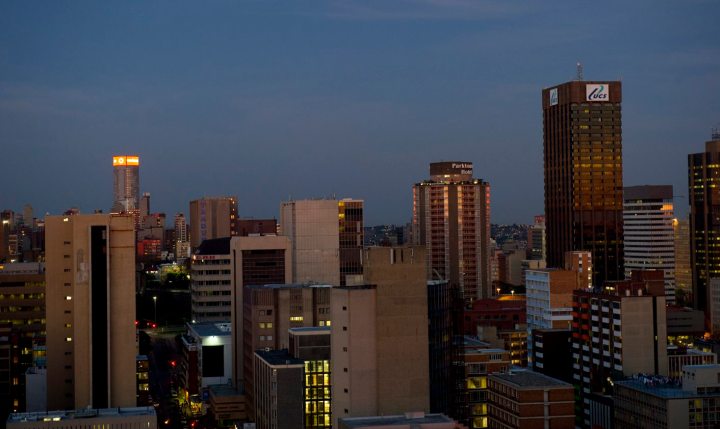Africa
Skyscraper shootout: The race to the top of Africa

The architects of this world have been engaged for decades in a kind of crazy, multi-billion dollar game of reverse limbo to build the tallest things in the shortest amount of time. Until now, Africa has been too poor (or too sensible) to join in this skyscraper-building madness. But our time has come. By SIMON ALLISON.
Africa’s tallest building is, in the grand scheme of things, not very tall at all. The Carlton Centre dominates Johannesburg’s skyline (which is a pity, because it is exceptionally ugly with its brutal concrete frame and tiny windows), but it is only 50 storeys and 223 metres high. In global terms, this is not very significant – it doesn’t even come close to featuring on the list of the world’s 300 tallest buildings. You’d have to stack four Carlton Centres on top of each other before you got a structure that was taller than the current world’s tallest, Dubai’s Burj Khalifa.
The Carlton has held onto its position as “the top of Africa” for a while – four decades, to be exact. Since it opened in 1973, no one’s been able to construct anything to beat it. No one’s showed all that much interest in the challenge, either. Until now.
Globally, the mania for tall buildings is getting out of control. Barely does one skyscraper break through the clouds when another comes along, taller, prettier and more environmentally friendly. There are four new behemoths currently under construction that will dwarf the Burj Khalifa once completed (one in Saudi Arabia is nicknamed the Mile High Tower, and is meant to be exactly that).
Africa, finally, is catching on. Well aware that the title of “Africa’s tallest building” is the lowest-hanging fruit in the architecture world, governments, companies and architects across the continent are eyeing the prize and putting plans into action.
Just this week, Ethiopia announced its entry in the race to the top. “Ethiopia’s capital city, Addis Ababa, may boast Africa’s tallest building by 2017,” announced the Ethiopian Radio and Television Agency, somewhat breathlessly. Although no plans or sketches have been released yet, plans for the 99-storey building – to be built by a Chinese corporation – have apparently already been approved, and the necessary land acquired.
Ghana too is getting involved. Hope City, launched by President John Mahama in March, is supposed to be a $10-billion tech hub just outside Accra, the centrepiece of which will be a 75-storey, 270-metre-high tower surrounded by five other not-quite-as-tall skyscrapers (the unusual cluster design is supposed to channel the spirit of traditional Ghanaian compound huts).
But South Africa, eager to keep the prestigious title on home soil, has unveiled the most ambitious new project. Thswane Municipality is putting its political weight (although not funding) behind the construction of the Symbio-City project in Centurion, a business park that would include a monster skyscraper measuring an estimated 447 metres and 110 storeys, making it comfortably the tallest building in Africa, even with the new competitors. On completion – projected for 2022 if all the funding and regulatory hurdles are crossed – it would punch its height on the world stage, becoming the 14th tallest building in the world (taller even than New York’s iconic Empire State Building).
This glut of new skyscrapers will redefine Africa’s skyline and perhaps challenge a few of those still-prevailing stereotypes about our continent being home to little but wide open plains and dusty villages.
Although there’s a nugget of truth there: fact is, Africa doesn’t really do tall buildings. This is, overwhelmingly, a flat continent, architecturally speaking; a land where structures sprawl rather than rise, where it’s always easier to build out than up.
Speaking specifically about South Africa, although the reasoning can be probably be applied to the rest of the continent, Nick Ristic of Architects @126 – the firm responsible for the Symbio-City design – explained that a variety of things have conspired to keep building heights low: “Many factors seem to have affected the limitations of height to date – not least being the cost. In my opinion, it has been the factors of open land and the ease of building low and wide that have been the key drivers,” he said. “This has resulted in a scenario where we have limited experience of tall buildings in the construction sector in South Africa – something that I believe is going to change very soon.”
Jhono Bennett, a Johannesburg architect with non-profit urban planning group 1:1 Agency of Engagement, explains that South Africa’s relative lack of high rises is about more than just practical considerations. “Cost is obviously a big factor. But from experiences in facilitating housing projects, there is always a difficulty in selling the idea of multiple storey housing as a permanent dwelling due to some cultural traditions.”
One example, he says, is a tradition that people need to be able to touch the ground in order to connect with their ancestors – something that’s tricky to keep up from anywhere higher than the ground floor.
Not that this will matter much for the Symbio-City project, or any of the other African skyscrapers that are being planned, for which utility is of secondary consideration, behind something far more emotive: bragging rights (think of skyscraper-building as a multi-billion dollar game of mine-is-bigger-than-yours, where the winner gets hordes of tourists and a penthouse apartment).
We should remember, though, that until all those blueprints become buildings, the continental bragging rights remain with the Carlton Centre. And even though it will be knocked off its perch sooner or later, perhaps the Carlton can take some consolation in the fact that even when it is no longer the tallest building in Africa, it will still be the ugliest. DM
Photo: Johannesburg, May 18, 2011. (Greg Marinovich)


















 Become an Insider
Become an Insider